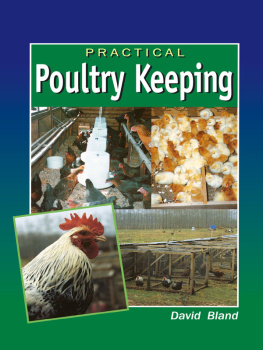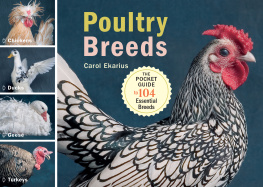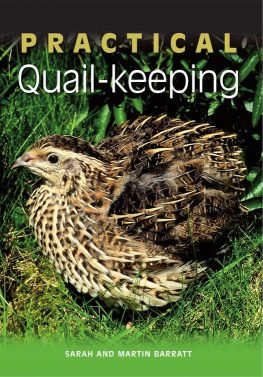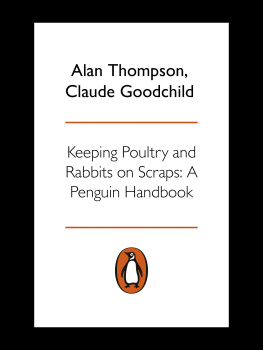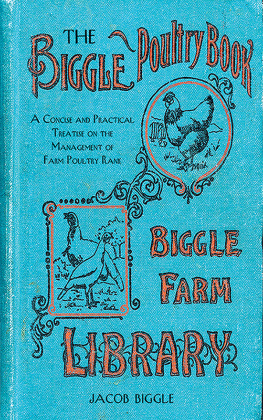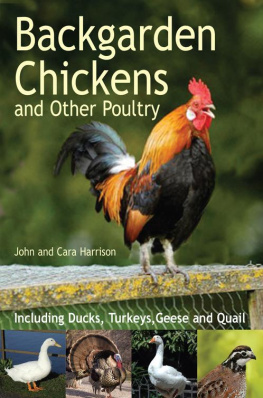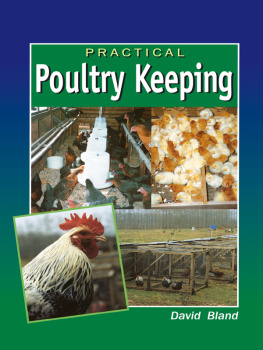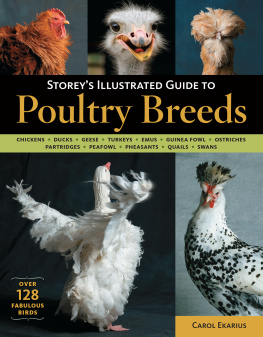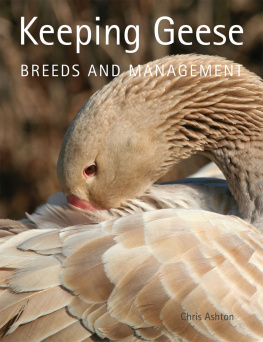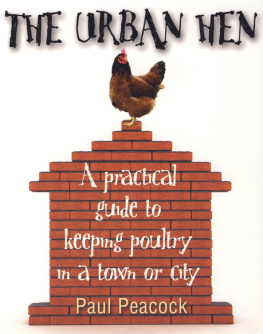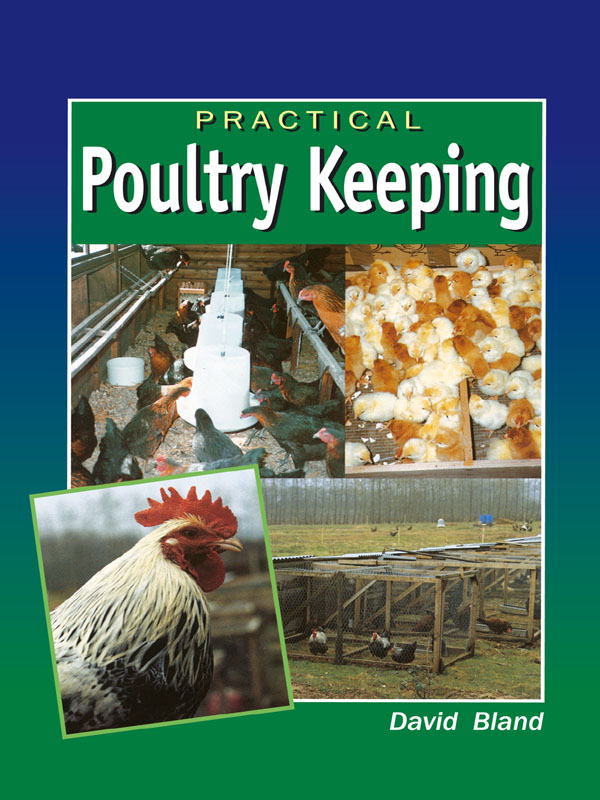PRACTICAL
Poultry Keeping
David Bland

The Crowood Press
First published in 2011 by
The Crowood Press Ltd
Ramsbury, Marlborough
Wiltshire SN8 2HR
www.crowood.com
This e-book first published in 2014
This impression 2010
David C. Bland 1996
All rights reserved. No part of this publication may be reproduced or transmitted in any form or by any means, electronic or mechanical, including photocopy, recording, or any information storage and retrieval system, without permission in writing from the publishers.
British Library Cataloguing-in-Publication Data
A catalogue record for this book is available from the British Library.
ISBN 978 1 84797 972 8
Picture credits
All photographs supplied by Alexandra Bastedo, David M. and Barrie Bland, Brinsea Incubators, Chelwood Outdoor Feeders, Curfew Incubators, Ecostat Ltd, Lurgan Fibre Ltd, Julian Moores, Mike John, Jo Coates, Poultry World and SPR. Photographic technician Dave J. Green.
All line-drawings by Debra Syme and Annette Findlay.
Contents
Foreword
In Practical Poultry Keeping David Bland makes a lifetime of practical experience available to his readers. Be they hobbyists, small-scale commercial farmers or simply have an interest in the development of the poultry industry, all will benefit from this accumulated expertise.
The book will be particularly valuable to those who wish to produce eggs and poultry in a traditional and less intensive manner than that currently employed by commerce. Other books concentrate on free-range methods, but here the author gives the reader the choice of several alternatives.
Peter Day
Former Chief Poultry Adviser
to ADAS, MAFF, now running
his own Poultry Industry
Consultancy
A NOTE ON PICTURE QUALITY
Please be aware when reading through this e-book that it was created from a printed original and not from digital files or printers film.
One of the results of this is that the pictures have a problem with moir. This is a phenomenon that degrades the quality and resolution of graphic images. and is caused by photographs being reprinted in screened format.
Note that the moir effect will vary according to the size that the image is displayed however. At certain sizes the effect will be radical and make pictures very difficult to view but if the size is changed the effect can disappear completely.
We would therefore advise that you experiment with changing the size of images or whole pages in your reader or desktop viewer should you experience these quality issues.
Introduction
This book has been written after forty-five years experience of practical poultry farming and will guide the reader step by step through each of the various stages of setting up and maintaining a unit, which will not only conform to welfare legislation but will be viable, avoiding many, if not all, of the common errors so frequently encountered at the cost of the producer. Units fail mostly because of ignorance through lack of training, and the problems often experienced by the novice can result in avoidable disease, severe injury and unacceptably high levels of mortality. It may be argued by some that to take on board all EC legislation will cause an otherwise successful business to fail. I hope to show the reader in the ensuing chapters how to achieve both viability and welfare.
Many large companies embark on alternative systems of egg production without understanding the fundamental requirements of the laying bird in these new environments. I say new as since the late 1960s egg production has been increasingly intensified, moving away from an environment which was and is today very problematical. With the advent of battery units, mortality was greatly reduced and several diseases associated with extensive production disappeared.
During the late 1960s and until the early 1970s there were many advisors whose academic qualifications were backed by a sound practical background, financed by the larger feed companies and supported in Britain by the Governments own National Agricultural Advisory Service (NAAS). During this period agricultural colleges were full of agricultural and poultry students, and some maintained long waiting-lists for poultry students. The overall standard of management of the farming community was very practical and knowledgeable, kept up to date by an exemplary advisory network.
Today, these same agricultural colleges, which in many cases have further expanded, attract very few, if any, students who wish to enter the field of agriculture. Instead, places are taken by those hoping for careers in the leisure business. Those highly respected advisors have long since retired and have been replaced by a much smaller band who seem unable to relate to the practical application of past systems. Now, unfortunately, advice emanates from those whose only training is in intensive environments and who fail to understand that extensive systems require different techniques, purpose-designed poultry housing, more specialized feed, hardier birds and a higher standard of management, which are all quite alien to their intensive counterparts.
Utility Breeds
THE HISTORY OF THE SPECIES
The historical background of poultry is important because, with a better knowledge of its ancestry and background, poultry keepers are better able to understand the hens requirements concerning most aspects of management. Armed with this knowledge, they will be able to improve the welfare of their birds on a practical basis, providing a suitable environment for them.
Domestic poultry can be traced back to when people gave up nomadic life and settled in small villages. They gathered around them all the animals that could supply their daily needs and these included chickens. There is a lot of truth in Rudyard Kiplings Just So Stories: the animals received, in return for sacrifice of liberty, comfort, protection and food.
Darwins first evolution theory that all poultry orginated from one fowl, Gallus Bankiva, was in later years rejected because there were definite differences of preferred habitat and natural behaviour between types of chicken. Gallus Bankiva, although varying to some extent in natural instincts and colour, depending on the Asiatic country in which it was found, is probably responsible for much of our present-day population of poultry, especially with regard to game birds and what are commonly known as light breeds.
However, it is difficult to dispute that our present-day heavy breeds have originated from a different source; this is evident from both their character and bone formation. These long, feather-legged heavy birds known nowadays as Cochins and Brahmas came from China and are altogether distinct from any other breeds of poultry. In-depth investigation by naturalists has not been able to explain the variations between the two main species, although these differences have been acknowledged by experienced poultry breeders the world over. To this day, no Gallus has been discovered from which modern heavy breeds are derived, and to which the Cochin and Brahma can be ascribed.
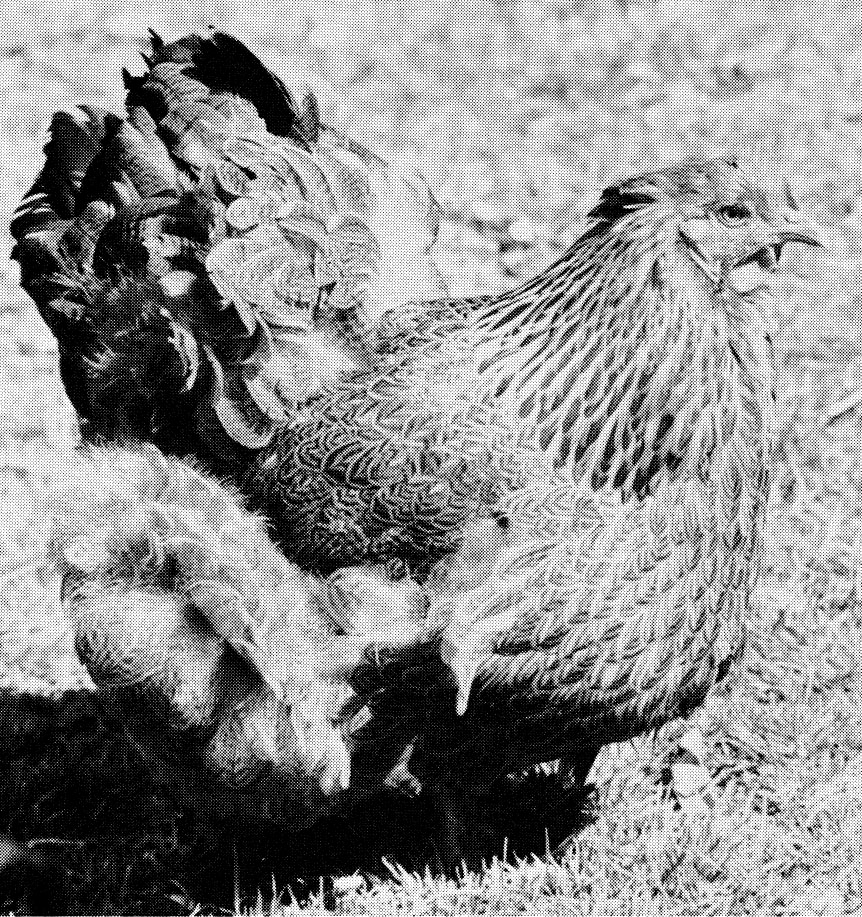
Cochin hen.
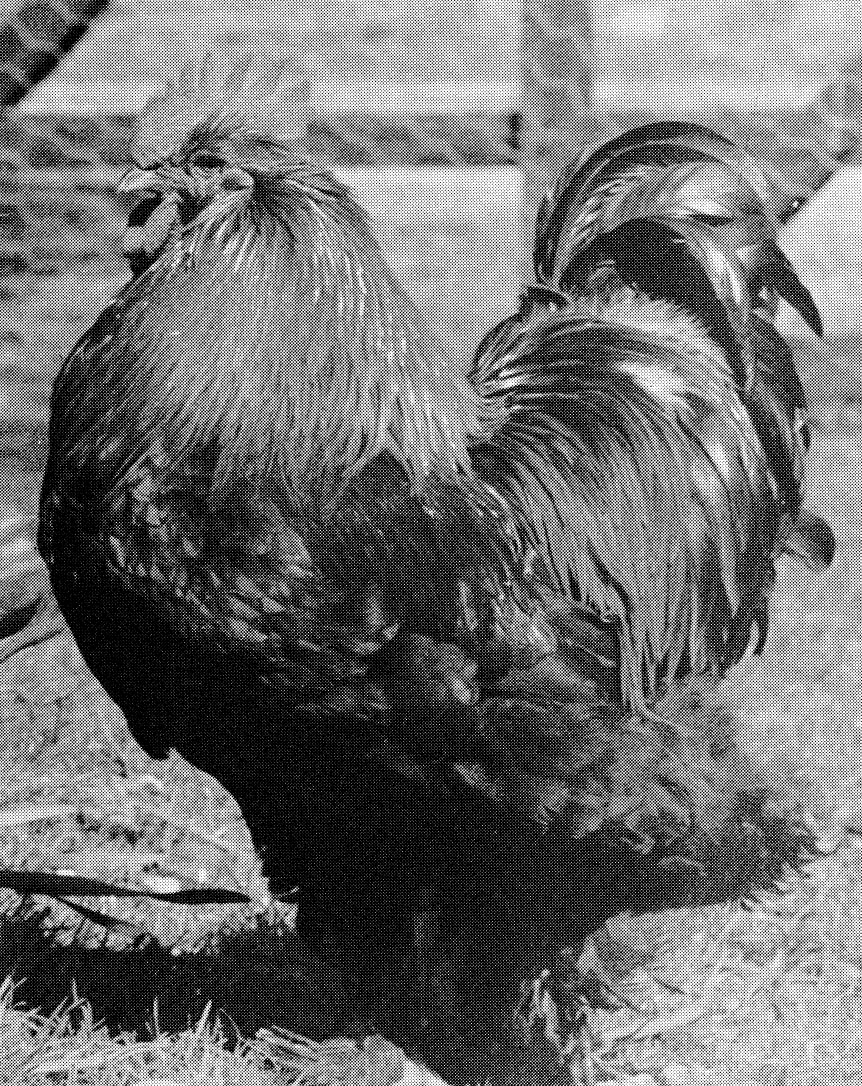
Cochin cockerel.
The importance of recognizing these two species of poultry lies in their differing characteristic habits which affect modern-day poultry keeping.

